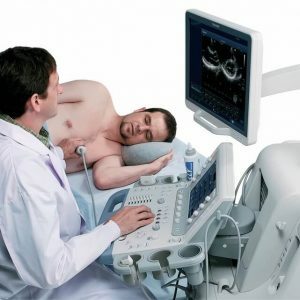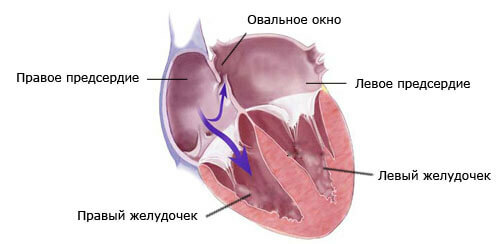Heart rate: what is the heart rate in men, women and children
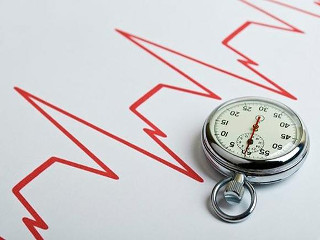
Content:
- Heart rate
- In men and women
- Normal number of strokes
The pulse is usually called the periodic tremors of the arterial walls associated with the cardiac cycle.
By this indicator, one can judge about deviations or their absence in the work of the human body.
Sometimes an experienced doctor can suspect the presence of this or that disease, only by feeling the patient's pulse.
In addition to the following factors, when measuring the pulse, other factors are also taken into account: its value (summed up from the overall assessment of voltage and filling), height, shape. But they are already being observed by a doctor in the presence of certain indications. Some of these characteristics can be accurately ascertained only with the help of special instruments.
When measuring this indicator, the following factors should be taken into account:
-
Frequency - the number of beats for a certain period of time (usually per minute). In an adult, the norm is
60-90 fluctuations in 60 seconds. - Voltage - the level of resistance of the artery during clamping. This indicator should be moderate - for example, with hypertension, the vessel is difficult to compress, and with a sharp drop in pressure, a slight pressure is enough for the pulse to disappear. The tension is determined by pressing the vessel with the fingers until the pulsation stops for pumping blood. The more effort it is necessary to make for this, the higher the blood pressure and, accordingly, the voltage of the pulse.
- Filling - the amount of blood in the artery during the heart rate. This factor is moderate (complete) in a healthy person, poor filling - in the presence of infectious or heart diseases. Equally bad as a barely palpable pulse, and too aggressive.
- Rhythm - these are the intervals between the oscillations of the vessel walls. Thrusts can be rhythmic or not (arrhythmic). The pulse norm is the same intervals of heartbeats.
- Symmetry - Identity of heart waves on both limbs. To assess this factor, it is necessary to measure the vibrations of the vessel walls simultaneously on the right and left hand. The norm is a symmetrical pulse. If there is a delay in the tremors on one of the sides, this indicates the presence of any disease - a tumor or heart defect.
Pulse measurement is carried out in various ways.. The easiest one is to use a heart rate monitor. This device is small in size, like a watch. It is worn on the wrist, after which sensitive sensors detect the intensity of the heartbeat.
The received data is displayed on a small screen. Thanks to this, the owner of the device will be aware of his physical condition and will be able to regulate the intensity of the exercise.
Such sensors are built into some simulators, as well as electronic tonometers - in addition to blood pressure readings, they determine the pulse rate, and some even show an indication of arrhythmia, as well as indicators of movement and correct body position during measurement.
Heart rate can also be measured manually, without the use of instruments. The procedure is performed on the arteries closest to the skin, radial, carotid, brachial, femoral, popliteal, temporal. To do this, use three fingers of one hand - index, middle and ring - to grope for the pulsation of the radial artery of the other hand.
All three fingers should be in line, just above the thumb. With light pressure on the artery, each of them should clearly feel the pulse wave. After that, you should notice the time and begin to count the number of vibrations of the walls of the vessels. The pulse rate will be the number of blood strokes that occur within 1 minute.
The heart rate indicators can be influenced by many factors, including:
- floor - women have an average of 7 beats, the heart rate is higher than men. This is due to the fact that the lady's heart is smaller in size, therefore, to pump an equal volume of blood, it has to contract more often;
- season and ambient air temperature - in tropical climates, the heart rate increases, so people with hypertension are not recommended to rest in hot countries with high humidity. Accordingly, cold can slow down blood flow and other body functions;
- physical exercise - after playing sports, hard work and intimacy, the heart begins to beat faster;
- emotional condition - any emotions (no matter, sad or joyful) cause heart palpitations;
- food intake and water procedures;
- overweight;
- body position - in the supine state, the pulsation is more rare;
- infectious or viral disease - with an increase in body temperature by 1 degree, the heart rate increases by 10 beats per minute. Also, this often happens when the body is poisoned;
- in women, this indicator can be influenced by the presence of "critical" days;
- age - in newborns, the frequency of blood pulsation can be 140 beats per minute - an adult is diagnosed with tachycardia with similar indicators.
 As the data from the table show, as a person grows up, his pulse slows down, and by old age it starts to increase again. There is evidence that before the onset of physical death, the heart rate (HR) reaches 160 beats per minute.
As the data from the table show, as a person grows up, his pulse slows down, and by old age it starts to increase again. There is evidence that before the onset of physical death, the heart rate (HR) reaches 160 beats per minute.
Heart rate - the norm for an adult heart rate
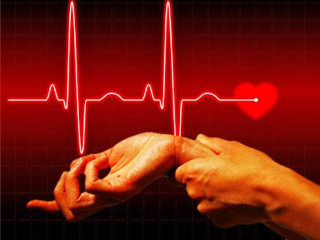 Older people are often interested in heart rate (normal in adults), heart rate (normal in adults).
Older people are often interested in heart rate (normal in adults), heart rate (normal in adults).
In cases where the heart rate does not reach the minimum, the specialist can diagnose bradycardia.
Depending on the causes that caused it, two forms are distinguished - pathological and functional. The first, in turn, is divided into extracardiac and organic forms.
The causes of extracardiac pathology can be neuroses, increased cranial pressure with meningitis, bruise, edema or brain tumor, stomach ulcer and
The organic form is capable of causing myocardial infarction, cardiosclerosis, myocarditis.
A toxic type of bradycardia develops with obvious intoxications with hepatitis, sepsis, typhoid fever, poisoning with substances containing phosphorus.
Functional bradycardia is observed in a healthy person during sleep, as well as in professional athletes - in some, the pulse can reach
The symptoms of bradycardia are:
- dizziness;
- weakness;
- cold sweat;
- fainting and fainting;
- fast fatiguability;
- chest pain;
- labored breathing;
- unstable blood pressure;
- disorders of thinking and memory.
If, with a rare pulse, such symptoms are not observed, then we can talk about functional bradycardia - this condition does not occur often and, as a rule, passes quickly. If the pulse rate is constantly low, it can cause heart failure.
Natural aging processes can lead to bradycardia - often in older people it is impossible to find out the causes of deviations. Such cases are defined as idiopathic.
Often, young people are also interested in heart rate (the norm in adults). The heart rate of the norm in adults is sometimes significantly higher. The reverse of bradycardia is a too fast pulse, reaching 100 beats / min in an adult. - called tachycardia.
With an acceleration of the heartbeat, the organ is forced to work "for wear and tear" and can quickly become unusable. In addition, this disrupts blood circulation, which is fraught with the receipt of an insufficient amount of oxygen by various organs and tissues of the body.
Too fast rhythm of pulsation can be caused by the following factors:
- alcohol abuse, smoking and caffeinated drinks;
- taking some medications;
- disruption of the thyroid gland;
- damage to the heart muscle due to heart disease;
- diseases of the central nervous system (CNS).
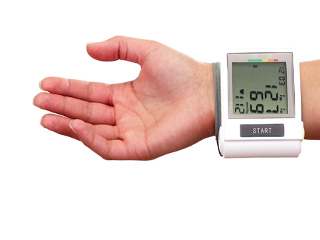 The types of tachycardia include atrial fibrillation and ventricular fibrillation - in both cases, the heart rhythm beats, the ventricles contract chaotically.
The types of tachycardia include atrial fibrillation and ventricular fibrillation - in both cases, the heart rhythm beats, the ventricles contract chaotically.
This is fatal at times.
Tachycardia can also be functional and pathological. The first form is caused by environmental conditions - stuffy room, coffee abuse, fast running, hot climate, etc.
The causes of pathological tachycardia are diseases of various systems or organs of the human body.
By type, sinus tachycardia is distinguished, in which the rhythm of the heartbeat is disturbed due to increased activity of the nerve sinus node, and ectopic - flowing in the form of seizures.
This disease does not include accelerated vibrations of the walls of the arteries in newborns.
Heart rate (normal in adults), heart rate (normal in adults), pulse changes can be detected electrocardiogram (ECG). In some cases, Holter monitoring may be necessary - with this method, the cardiogram records every movement of the heart during the day. At this time, the patient lives his usual life - moving, going to work and the gym, doing housework.
During the procedure, adhesive electrodes are attached to the patient's body and connected to a special device. The device weighing 0.5 kg is worn on a belt over the shoulder or attached to a belt. Data recording is carried out for 24 hours or more.
During the study, the patient needs to keep a diary, where all changes in physical activity, rest time and taking pills, possible outbursts of emotions, feelings of pain or discomfort in the heart area during various events or classes.
In some cases, a treadmill test is used - a diagnostic method carried out on a special treadmill under the supervision of a physician, assessing various indicators of the heart's work under stress.
Functional forms of cardiac arrhythmias do not require therapeutic treatment. With bradycardia, it will be enough to drink a cup of coffee for the pulsation to return to normal. Weakness and dizziness in this case are easily eliminated by preparations with ginseng root, eleutherococcus, belladonna, ephedrine, caffeine.
With tachycardia, it is possible to prescribe sedative (sedative) drugs for the course of treatment. In such cases, Valocordin, Corvalol, valerian or motherwort tincture are used. Herbal decoctions and herbal teas, which include mint, valerian, motherwort, hawthorn, peony, lemon balm, help well.
Coping with changes in heart rate necessarily involves quitting smoking. Nicotine contributes to vasoconstriction, which is why the heart has to work at multiply increased loads.
In no case should you self-medicate. The drugs must be taken exclusively on the recommendation of a doctor and in doses determined by him. Failure to comply with these measures can lead to disastrous consequences.
The rate of beats per minute in men and women
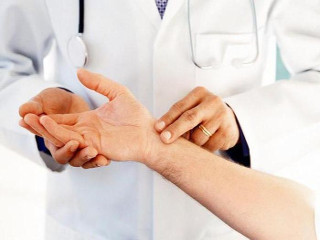 The heart rate may differ from man to man. This indicator will depend on the physiological characteristics of the personality (height and weight), level fitness, age, presence or absence of chronic diseases and the frequency of emotional shocks.
The heart rate may differ from man to man. This indicator will depend on the physiological characteristics of the personality (height and weight), level fitness, age, presence or absence of chronic diseases and the frequency of emotional shocks.
The average rate of beats per minute for men and the rate of beats per minute for women will differ. For a strong half of humanity, it is
However, for a frequent visitor to the gym, the heart rate may not exceed 50 beats / min. This is explained by the fact that the trained heart of an athlete contracts less often, makes fewer movements. Swimming, skiing, and running are great for achieving these goals.
In this case, it is imperative to ensure that the pulse does not exceed the maximum limits. This indicator is easy to calculate - the number of full years should be subtracted from 220.
However, even at a regular fitness center, vibrations of the walls of blood vessels become more frequent when the temperature of the body or the environment rises, for example, in a steam room. The same happens with stressful situations and the use of alcoholic beverages.
It has long been proven that the rate of heart beats per minute in men and the rate of heart beats per minute in women is insignificant, but different.
Firstly, as already mentioned, a woman's heart is smaller, so it has to contract more often. Secondly, ladies are more emotional creatures, and their heart begins to beat faster even for such an occasion, when a man does not even think to worry. The reason may be a new model of a handbag or an extra 200 g on the scales.
For women, a normal heart rate would be
It is clear that in the latter case, a trained heart will "give out" a smaller figure - approximately
A separate topic is the pulse of a pregnant woman. It is inappropriate to draw analogies here between the rate of beats per minute in men and the rate of heartbeats per minute in women.
During this period, the body is undergoing a radical restructuring of all functions. The heart rate is especially frequent in the first and third trimesters. In the first, this is due to the transformation of the hormonal background and possible toxicosis, in the latter - with the fact that the baby has already grown up, and the mother's heart has to distill more blood.
The allowable heart rate in a pregnant woman should not exceed
To calm your heartbeat, a pregnant woman can do the following:
- lie down on a flat surface and relax;
- drink a glass of water in small sips;
- go out into the fresh air;
- wash your face with cold water;
- inhale deeply and slowly and exhale without haste.
A slow pulse is rarely observed in women in an "interesting" position. Babies of such mothers are sometimes born with insufficient weight or hypoxia.
If an infrequent heartbeat does not cause trouble for a woman, then she should walk more, drink more green tea, rest more and sleep more, and also revise her diet.
Own indicators and in children. For newborn babies, a fairly large range is considered the norm - from 110 to 170 beats per minute. Ideally, this figure does not exceed 140.
Until a year, the values hardly change. Then the child begins a phase of active growth.
During elementary school
From this age - 15 years - the heartbeat will be considered according to the norms of an adult:
Heart beats per minute - normal
A high pulse is observed during physical and emotional stress, when in a stuffy room, in hot weather, and an increase in body temperature.
However, the reasons for a high rhythm can mean the presence of certain ailments:
- heart diseases;
- disruption of the endocrine system;
- emphysema (lung disease).
 Among other things, taking certain medications provokes heart palpitations.
Among other things, taking certain medications provokes heart palpitations.
These can be hallucinogens, antidepressants, diuretics, vasoconstrictors for the common cold, cardiac glycosides, aphrodisiacs, and, of course, drugs.
A high pulse can occur after eating certain foods, coffee, tea, fatty foods, and a lack of vitamins.
Anyone who cares about well-being and often takes heart rate measurements knows their number of heart beats per minute. The rate at rest in healthy people should not be more than 90 beats in 60 seconds.
Exceeding this indicator in most cases means a mild degree of tachycardia. But there are exceptions: for some individuals, a pulse over 90 may be a physiological feature of the body that does not bother them at all and does not cause the slightest inconvenience.
An overestimated number of heart beats per minute is the norm for them, and a figure less than this indicator can serve as an alarming signal.
You can determine the permissible load on the body using a simple experiment:
- calculate your heart rate at rest;
- Sit down 20 times, stretching your arms forward;
- check the pulse again.
If the increase in pulse waves is 25% or less, the result is ideal and the heart is well trained;
When the figure shows more than 75% of the increase, then one can suspect the presence of cardiovascular pathologies - the resulting number of heart beats per minute is far from the norm. In this case, you should start worrying and schedule a visit to the doctor.
Also, one should not neglect the symptoms of tachycardia and bradycardia - a rapid heartbeat leads to rapid wear of the main organ, and a slow one - to tissue hypoxia.
You should start taking care of your health as early as possible - at least once a year to undergo a medical examination in order to be sure of the normal functioning of the body.
Those who are over 45 years old should be especially careful - the body cannot fully to resist negative environmental factors and adequately respond to stressful situations.
All this contributes to the violation of heart rate and provokes the development of heart failure. That is why it is so important to control your pulse and visit a doctor on time.
Partial use of site materials (no more than 30% of the content of the article) is allowed only with a hyperlink on www.med88.ru, full use of the article (more than 30% of the article content) is possible only with written permission edition.

